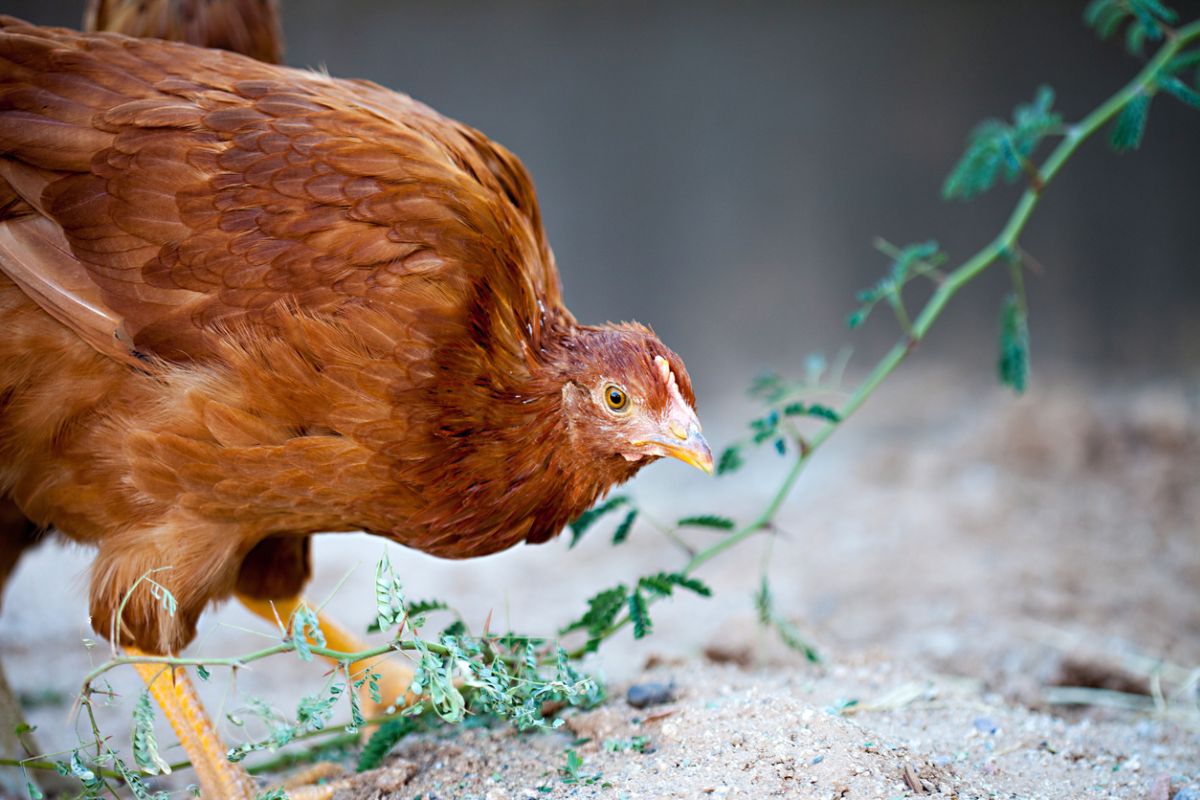A New Hampshire chicken is a good beginner bird, as long as you do your research first. They’re easy to find, and they’re known for their beautiful red feathers.
Is a New Hampshire the right breed for you? Let’s look over their egg production, temperament, and care requirements to help you decide.
New Hampshire Chicken Overview
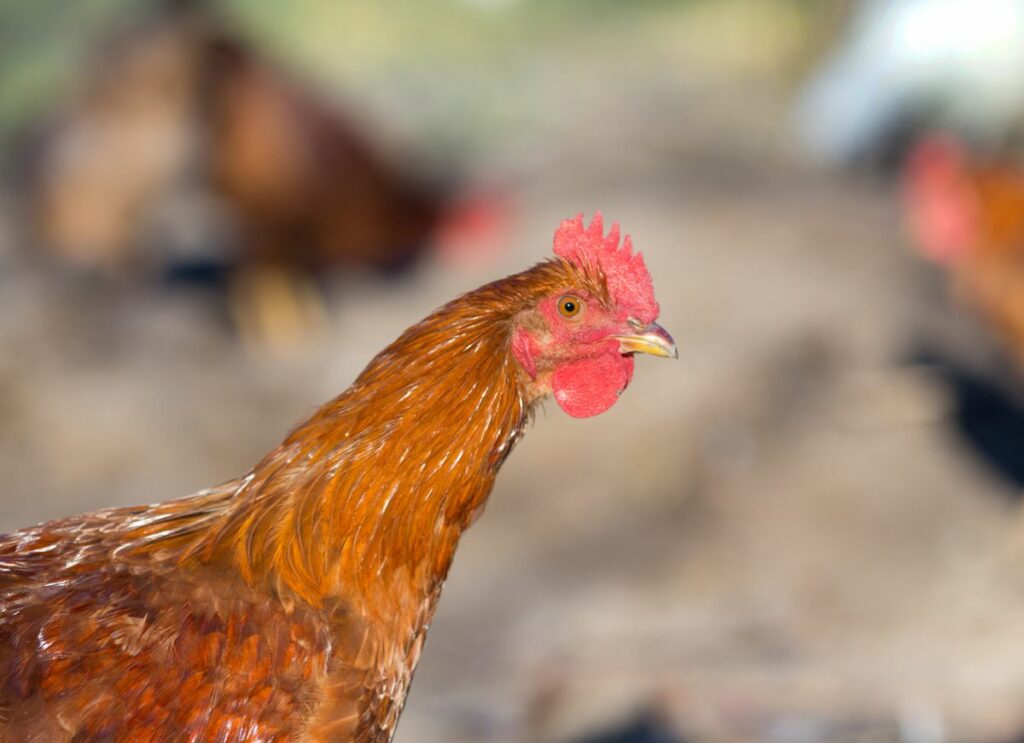
Before we dive into the details of this breed, here is an overview of what to expect.
| Lifespan | About 7 years |
| Weight | 6.5 to 8.5 pounds |
| Appearance | Large body with light red feathers |
| Egg Production | 3 eggs per week, 200 to 240 per year |
| Egg Color | Brown |
| Good for Beginners? | Yes |
| Minimum Coop Size | 4 square feet per chicken |
| Price | $2 to $3 per chick |
New Hampshire Chicken Origin
This breed of chicken is newer than most, suspected to have originated about 100 years ago. As the name implies, these birds came from New Hampshire, but some also came from Massachusetts.
Professor “Red” Richardson first bred these chickens around 1915. This bird is thought to have been created with a strain of the Rhode Island Red chicken. At the time, Rhode Island Reds were popular and easy to acquire, making them a great bird to breed with.
New Hampshires have been used for both eggs and meat since they were created. They were first recognized by the American Poultry Association in 1939.
New Hampshire Chicken Appearance
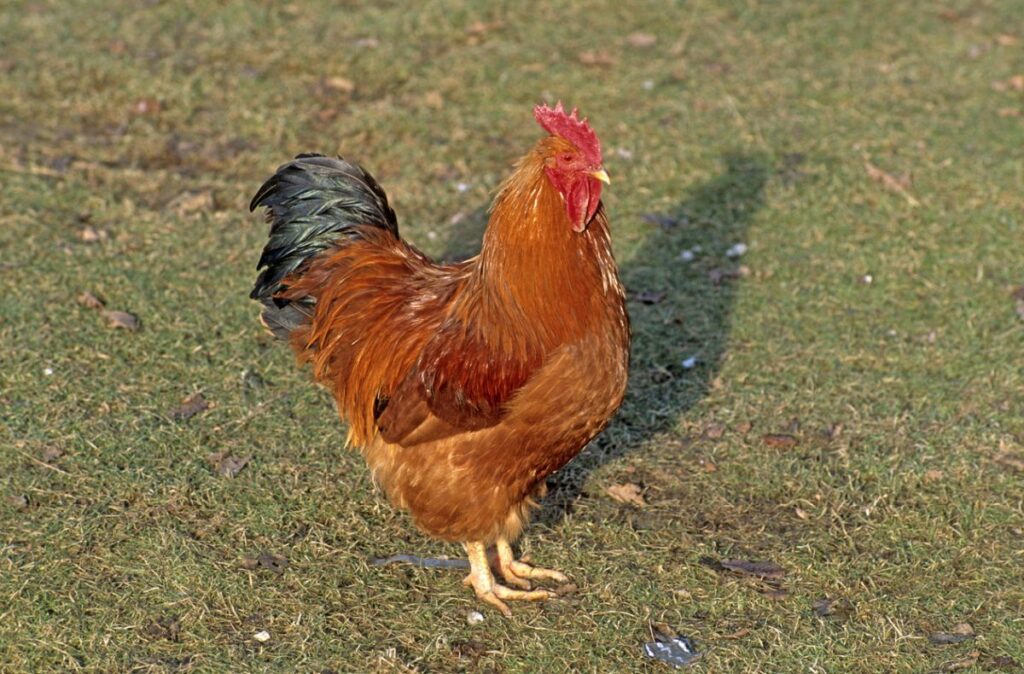
These birds resemble Rhode Island Reds a little, but they still have some of their own unique traits. So, let’s look at their appearance during every stage of their life.
New Hampshire Chicken Egg Color
These birds lay large light brown eggs, which sometimes look tinted. Their egg production is lower than the average chicken, but the size of the New Hampshire chicken eggs are decent.
New Hampshire Chicks and Pullets
New Hampshire chicks usually have soft yellow feathers with a hint of reddish-brown on the tips. As they grow up, the reddish-brown becomes more prominent, especially as they lose their chick fluff and grow in their adult feathers.
Pullets, which are like teenage chickens, look just like the adults, only smaller and skinnier. Their wattle and comb usually don’t grow in until they’re a little older.
Hen and Rooster Appearances
An adult New Hampshire has reddish-brown feathers whether it’s a hen or rooster. Then, the tip of their tails have darker feathers. Their beaks and feet are yellow while their combs and wattles are red. They always have orange eyes.
The only significant difference between hens and roosters is that roosters stand taller with a longer tail and a larger comb. Otherwise, their physical characteristics are very similar.
Size and Weight
Most New Hampshire chicken hens weigh about 6.5 pounds while the roosters weight 8.5 pounds. There are also Bantam New Hampshires, which are smaller versions of the breed. Bantam hens weigh 30 ounces while roosters weight 34 ounces.
New Hampshire Chicken Temperament
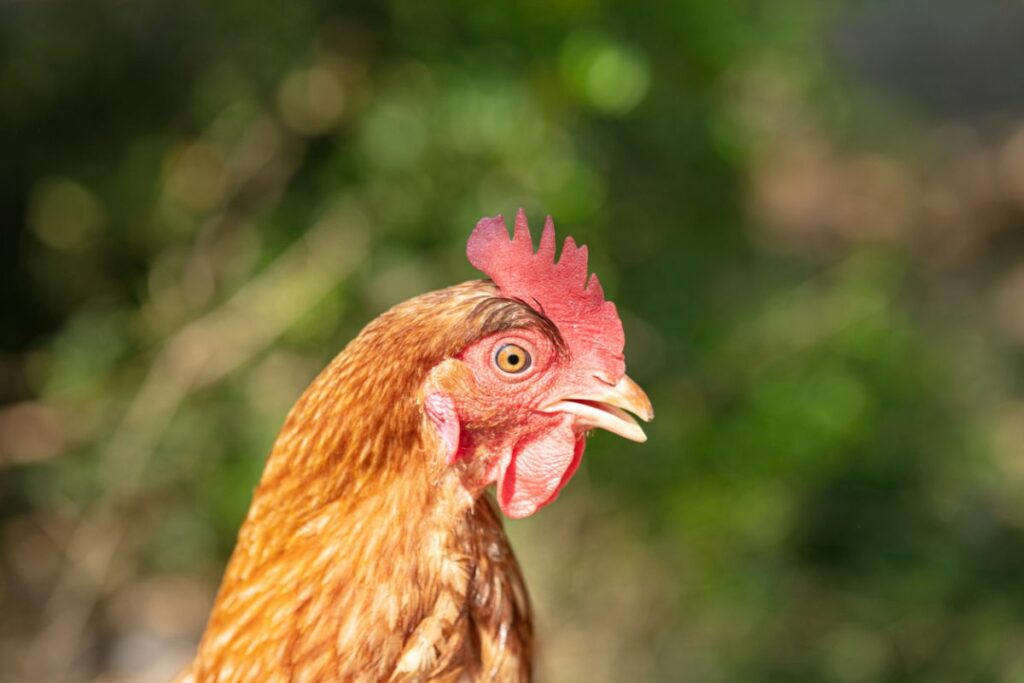
These chickens are known fo their calm, friendly personalities. They’re easier to tame than other breeds, so they can make good pets. Most don’t mind being handled by humans, but they might quarrel with other birds. They tend to be a bit food aggressive at times, but other than that, they’re easy-going.
Broodiness
New Hampshires go broody on a regular basis. They make great mothers, so many keepers let them incubate their own eggs. When they’re broody, they may even care for chicks that aren’t their own.
Noise Levels
These chickens may be louder than the average breed. They like to squawk and chatter amongst themselves, which are regular chicken noises that can’t be deterred. If you live close to your neighbors, you might want to choose a breed that’s a bit quieter.
Do They Get Along with Other Animals?
You can keep your New Hampshires near other animals if you want, but they do best if kept with chickens of the same species. They can get aggressive when eating, so they might pick fights with other breeds too often. You can still care for more than one breed, but it’s best to keep their enclosures separate unless you know your chickens are more docile.
Care Requirements
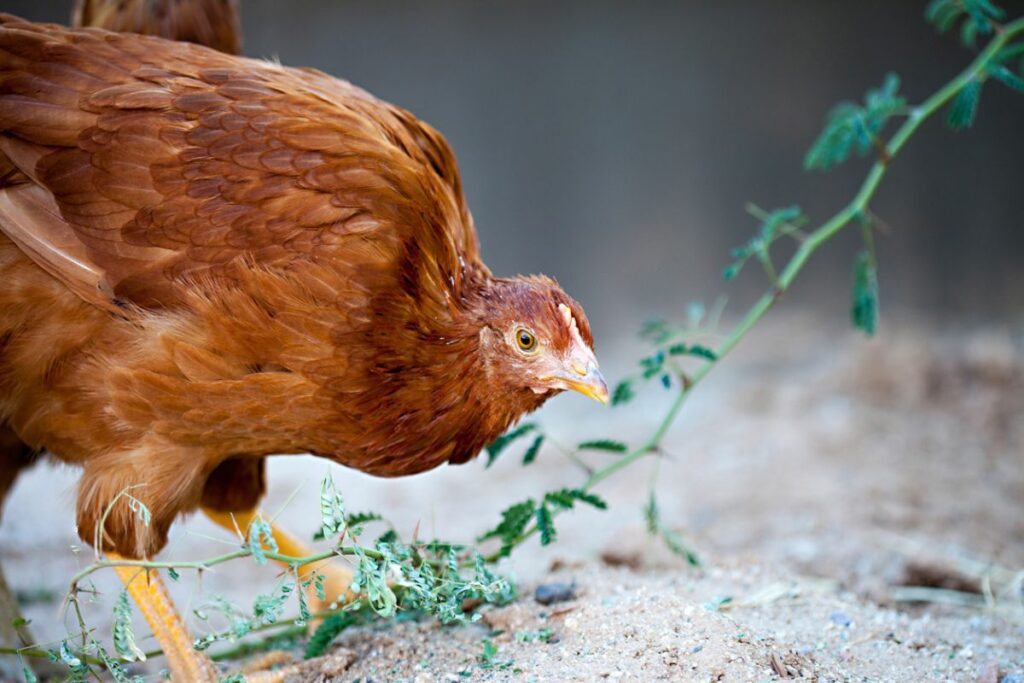
In general, this breed is fairly easy to care for. Yet, you’ll be in charge of living creatures, so it’s important to research the care involved before you add these birds to your coop.
Feeding
For the first 12 to 14 weeks of your chicken’s life, you should serve them a high-protein starter feed. Most chicks need about 18% protein. Then, once they’re older than 14 weeks, they should be transitioned into a layer adult feed. Layer feeds are essential for helping hens produce healthy eggs.
It’s a good idea to also serve oyster shells or other calcium supplements to your hens. They should be in a separate container than the feed. Extra calcium helps ensure that all the eggs produced have strong shells.
Since these birds tend to be food aggressive, you’ll want to have several feeding stations in your enclosure with a good distance in between each one. Then, the chickens will be less likely to feel the need to fight over food.
Enclosure Setup
Each chicken should get at least four square feet of space in the coop, but more is always better. They like to have plenty of roosting space, but New Hampshires tend to roost a bit closer to the ground than most chickens. Set up their perches two to four feet off the ground.
When outside of the coop, these birds need lots of space to prevent fights. If you want to keep them in an enclosed area, make sure they have at least ten square feet per bird. However, they’ll thrive best if they’re allowed to free-range for most of the time.
Free-ranging is a good opportunity for birds to collect extra nutrients. They’ll pick up plants, bugs, and other pests on your property, which will make their diets healthier. Birds who free-range will still need chicken feed, but they’ll likely be happier and healthier.
Temperature
New Hampshires are very tolerant of cold weather since they were first bred in states with cold winters. They will often enjoy spending time outside, even when the temperatures are below freezing.
While some breeds stop laying eggs in the winter, these hens are just as consistent during every season. So, that makes up for their low egg production.
Even though these birds aren’t bothered by the cold, you should still keep their coop warm. If you live somewhere that gets frigid in winter months, consider purchasing a coop heater.
Health Concerns
These birds are strong and have minimal health concerns. Yet, like all chickens, they can suffer from parasites like mites, fleas, and bedbugs. If you clean your chicken enclosure regularly, you can reduce the risk of these pests.
While these birds enjoy cold weather, you should still keep an eye out for frostbite. If you notice frostbite on your chickens, especially on their combs, bring the injured chicken to a warmer area and keep them hydrated while they heal.
There aren’t any common diseases for this breed, but there’s always a chance that they could get sick. If one of your chickens is showing unusual symptoms, separate them from the rest of the coop until they recover.
Egg Production
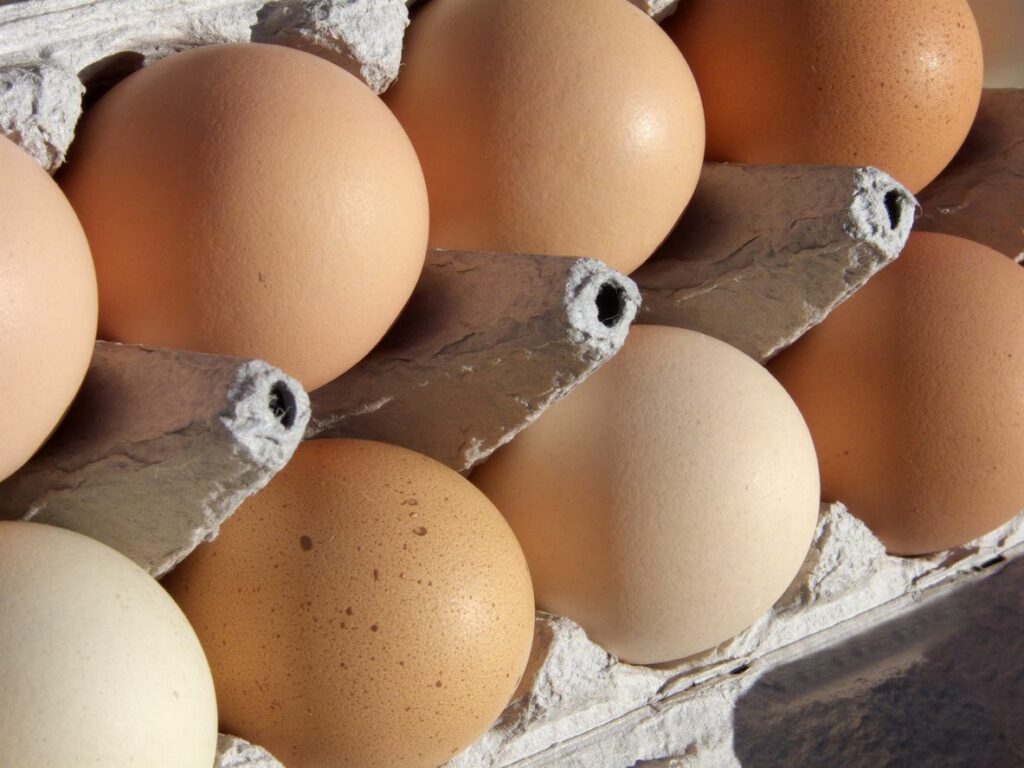
New Hampshires produce about three eggs per week, which results in 200 to 240 per year. It might not be enough to sell on a regular basis, but it’s plenty for your family to enjoy. Most of these hens produce eggs year-round, so they don’t slow down in winter months.
Frequently Asked Questions
Before you decide if this breed is right for you, you’ll need to get all your questions answered. Here are a few things that new chicken keepers commonly wonder.
What is a New Hampshire Chicken Lifespan?
New Hampshires have an average life expectancy of around seven years old. They mature faster than most breeds, but many don’t live quite that long because they’re used for meat.
What is the Difference Between a Rhode Island Red and New Hampshire?
The main difference between a Rhode Island Red and a New Hampshire red chicken is that Rhode Island Reds have darker red feathers while New Hampshires have light brown/red feathers. New Hampshires produce less eggs but more meat. They’re also faster to mature.
Is a New Hampshire Chicken Right for You?
With so many chicken breeds out there, it’s difficult to choose which one is perfect for you. If you’re looking for an easy chicken, a chicken for meat, or a chicken that produces a small amount of eggs, a New Hampshire red chicken might be perfect for you.
However, if you were hoping to sell the eggs your chickens produce, then you’ll want to choose a breed with better egg production. Rhode Island Reds are a good alternative for those looking for more eggs.
Before you decide which chicken breed to bring home, do plenty of research. You’ll want to have supplies and an enclosure prepared well before you bring the birds into your life.
